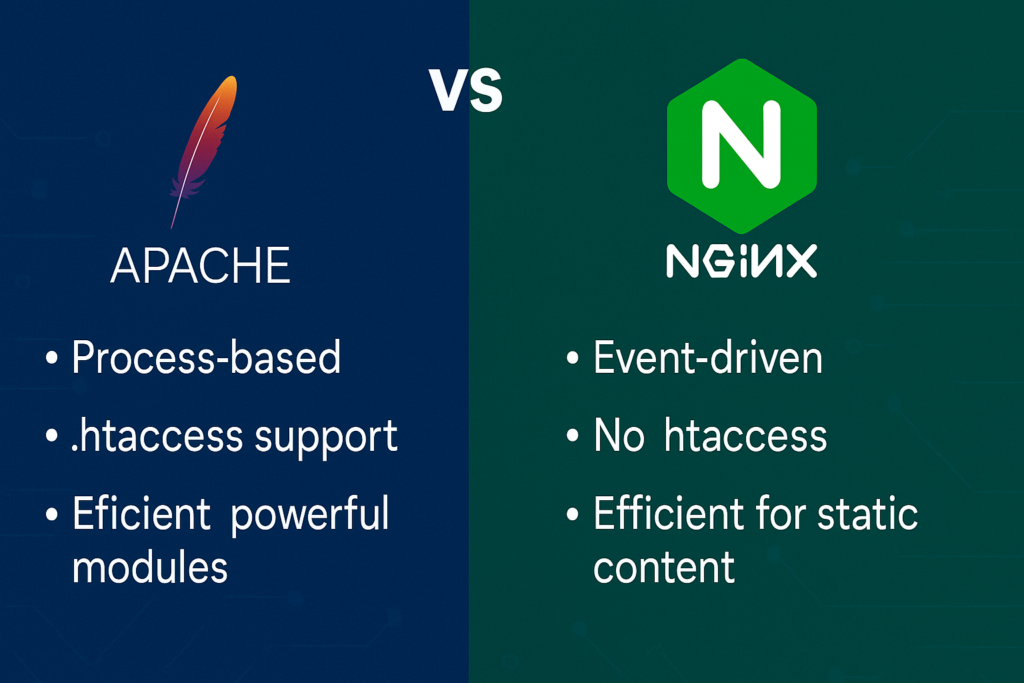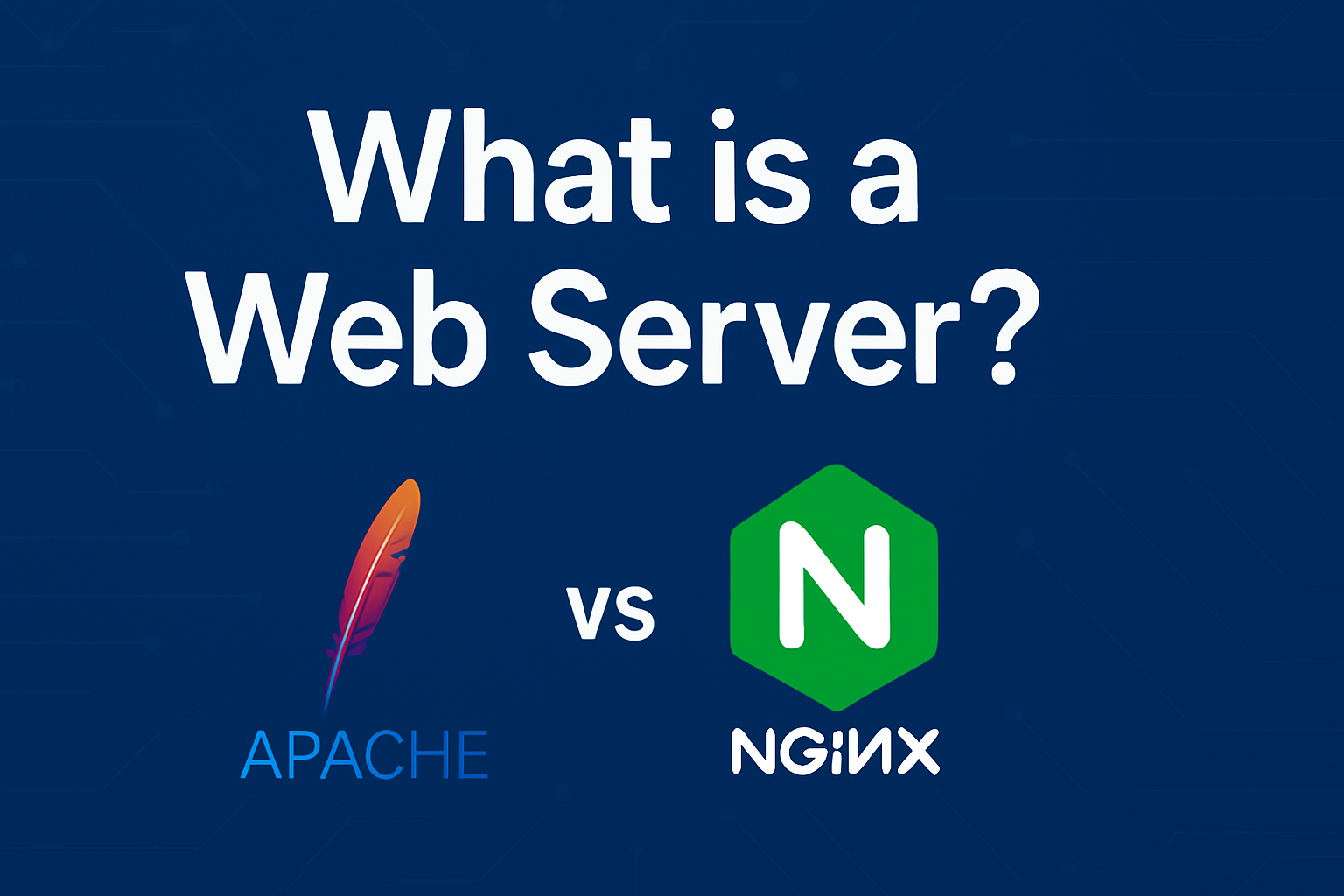Whether you’re hosting a blog, building a web application, or managing enterprise systems, web servers play a critical role in delivering content to users across the internet. Two of the most widely used web servers are Apache and Nginx—but what are they exactly, and how do they compare?
In this blog post, we’ll break down what a web server is, how it works, and provide a detailed comparison of Apache vs Nginx to help you choose the right one for your needs.
🌐 What is a Web Server?
A web server is a piece of software (and sometimes hardware) that handles HTTP requests from clients (like web browsers) and serves them web content such as HTML pages, images, videos, or applications. When you type a URL into your browser, the browser sends a request to the web server hosting that content.
🧠 Fun fact: Web servers are essential to the backbone of the internet—without them, no website could be viewed!
Learn more: Mozilla Developer Network – How web servers work
🔄 How Does a Web Server Work?
The basic operation of a web server involves:
Receiving a request (usually via HTTP or HTTPS)
Processing the request (e.g., routing or authentication)
Sending the correct response (HTML, file, error message, etc.)
This process happens in milliseconds, and high-performance web servers can handle thousands of these requests per second.
Apache vs Nginx: Key Differences
| Feature | Apache | Nginx |
|---|---|---|
| Architecture | Process-driven (threads per connection) | Event-driven (handles thousands of connections in a single thread) |
| Performance | Slower under high traffic | Faster, especially for static content |
| Configuration | Uses .htaccess files | Centralized config (nginx.conf) |
| Dynamic Content | Better for PHP (via mod_php) | Requires external processors (PHP-FPM) |
| Caching | Basic caching modules | Advanced caching with FastCGI |
| Ease of Use | Beginner-friendly | Steeper learning curve |

Apache: The Veteran Web Server
✅ Pros:
.htaccess support – Easy per-directory configuration.
Wide compatibility – Works well with PHP, WordPress, and cPanel.
Extensive modules – Supports
mod_rewrite,mod_security, etc.
❌ Cons:
Slower under heavy load – Struggles with 10,000+ concurrent users.
Resource-heavy – Spawns new processes for each request.
🔗 Use Apache if:
You’re running a shared hosting environment.
You need easy WordPress integration.
You rely on .htaccess rules.
(Learn more: Apache HTTP Server Documentation)
Nginx: The High-Performance Alternative
✅ Pros:
Handles high traffic efficiently – Used by Netflix, Dropbox, and Cloudflare.
Low memory usage – Ideal for VPS and cloud hosting.
Reverse proxy & load balancing – Great for microservices.
❌ Cons:
No .htaccess – Requires manual config changes.
Harder to debug – Fewer GUI tools compared to Apache.
🔗 Use Nginx if:
You need speed for static content (blogs, media sites).
You’re running a Node.js or Python app.
You expect spikes in traffic.
(Learn more: Nginx Official Docs)
Performance Benchmarks
| Test Case | Apache (req/sec) | Nginx (req/sec) |
|---|---|---|
| Static HTML | ~2,500 | ~8,000 |
| PHP (WordPress) | ~1,200 | ~3,500 (with PHP-FPM) |
| Reverse Proxy | ~1,800 | ~12,000 |
(Source: DigitalOcean Benchmark)
Which One Should You Choose?
Pick Apache if:
You’re on shared hosting.
You use
.htaccessfor SEO (e.g., URL rewrites).You run WordPress without heavy traffic.
Pick Nginx if:
You need speed and scalability.
You’re using modern stacks (React, Node.js, Docker).
You expect traffic spikes (e.g., e-commerce).
💡 Pro Tip: Many sites use both (Nginx as a reverse proxy + Apache for backend).
🧠 Bonus: Use Them Together!
A popular architecture is using Nginx as a reverse proxy in front of Apache—combining the strengths of both.
Check out this guide: DigitalOcean – How To Configure Nginx as a Reverse Proxy for Apache
Further Reading
Which web server do you prefer? Let us know in the comments! 🚀

